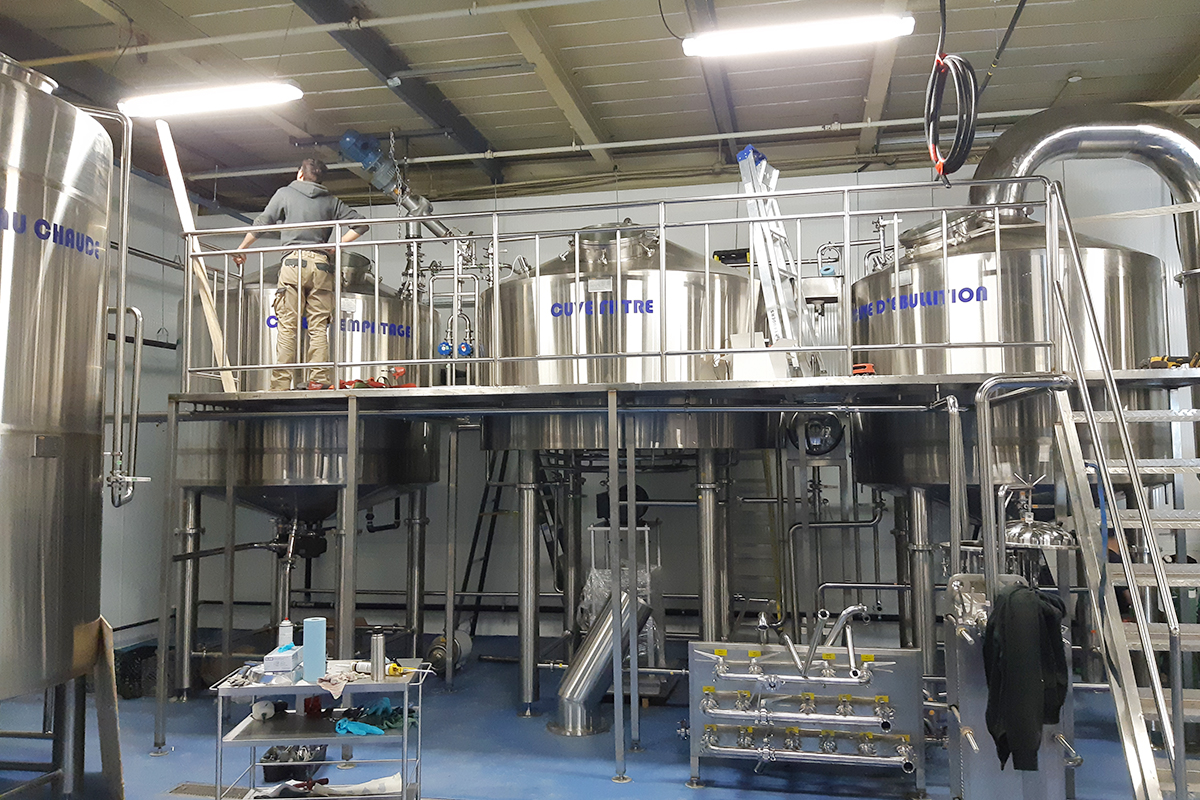The Role Of The CIP System In Brewery Equipment
A CIP (Cleaning-In-Place) system is an integral part of brewery operations, ensuring that equipment is cleaned effectively without requiring disassembly. It plays a crucial role in maintaining hygiene, efficiency, and product quality. Below is an overview of the CIP system’s functions, benefits, and significance in brewery equipment.
1. What is a CIP System?
A CIP system is a closed-loop cleaning system designed to clean and sanitize brewing equipment, such as fermenters, brite tanks, pipes, and heat exchangers, without requiring manual intervention or dismantling. It circulates cleaning solutions, rinsing water, and sanitizers through the equipment.
2. Key Functions of a CIP System
Effective Cleaning: Removes residues of malt, hops, yeast, and other brewing by-products from tanks, pipes, and fittings. Cleans hard-to-reach areas, ensuring complete sanitation.
Sterilization: Prevents microbial contamination by sterilizing equipment with sanitizing agents or hot water.
Rinse Cycle: Thoroughly rinse tanks and pipelines to remove any residual cleaning chemicals that might affect beer quality.
Maintains Consistency: Ensures uniform cleaning across all equipment, reducing variability in hygiene standards.
3. Benefits of a CIP System
Improved Hygiene: Essential for maintaining the brewery’s cleanliness and adhering to food safety standards. Reduces the risk of cross-contamination between batches, ensuring consistent beer quality.
Enhanced Efficiency: Minimizes downtime for cleaning by automating the process. Eliminates the need for manual scrubbing or disassembly of equipment.
Cost-Effective: Reduces labor costs by automating cleaning tasks. Optimizes the use of cleaning chemicals, water, and energy.
Increases Equipment Longevity: Regular and thorough cleaning prevents build-up that can cause wear or corrosion, extending the life of brewery equipment.
Environmental Benefits: Modern CIP systems are designed to recycle water and cleaning solutions, reducing waste and environmental impact.
4. Components of a CIP System
Storage Tanks: For cleaning agents, sanitizers, and rinsing water.
Pumps: Circulate cleaning solutions and rinsing water through the equipment.
Spray Balls: Installed inside tanks for uniform distribution of cleaning solutions.
Heat Exchanger: Heats water or solutions to improve cleaning efficiency.
Control Panel: Automates and monitors the cleaning process, ensuring precise cleaning cycles.
Sensors and Valves: Regulate flow, pressure, and temperature during cleaning.
5. How the CIP System Works
Pre-Rinse: The equipment is rinsed with water to remove loose particles and residues.
Cleaning Solution Circulation: A caustic solution (or detergent) is circulated to break down organic matter like yeast and proteins.
Rinse: The system flushes the cleaning solution with clean water.
Acid Wash (Optional): An acid solution may be used to remove mineral deposits and beer stones.
Sanitization: Sanitizing agents or hot water are circulated to eliminate microbes.
Final Rinse: A final rinse with potable water ensures no residue is left behind.
6. Importance in Brewery Equipment
Fermentation Tanks: Cleans and sterilizes fermenters after each batch to avoid contamination and off-flavors.
Bright Tanks: Ensures tanks are clean for conditioning and carbonation, maintaining the beer’s clarity and taste.
Piping and Valves: Prevents residues in piping from affecting the next batch.
Heat Exchangers: Removes protein build-up and other debris that can reduce heat transfer efficiency.
Choosing a CIP System for Your Brewery
Capacity: Match the CIP system’s capacity to the size of your brewery equipment.
Automation: Automated systems reduce labor but may come at a higher cost.
Cleaning Solutions: Choose compatible cleaning agents based on the materials used in your equipment.
Energy Efficiency: Opt for systems with energy-saving features, such as water and solution recycling.
Compliance: Ensure the system meets food-grade and brewery standards, like FDA and ISO certifications.
8. Best Practices for CIP System Use
Regular Maintenance: Inspect and clean CIP system components like spray balls and pumps to ensure efficiency.
Proper Chemical Use: Use recommended cleaning agents in the right concentrations to avoid damaging equipment or leaving residues.
Temperature Control: Maintain appropriate cleaning solution temperatures for effective cleaning without equipment damage.
Cycle Monitoring: Regularly check cleaning cycle parameters to ensure optimal performance.
The CIP system is a cornerstone of modern brewery operations, ensuring cleanliness, efficiency, and beer quality. By automating cleaning and sanitization, it minimizes downtime, reduces contamination risks, and lowers operational costs. Choosing the right CIP system tailored to your brewery’s size and production needs is crucial for maintaining seamless brewing processes.

Comments
Post a Comment